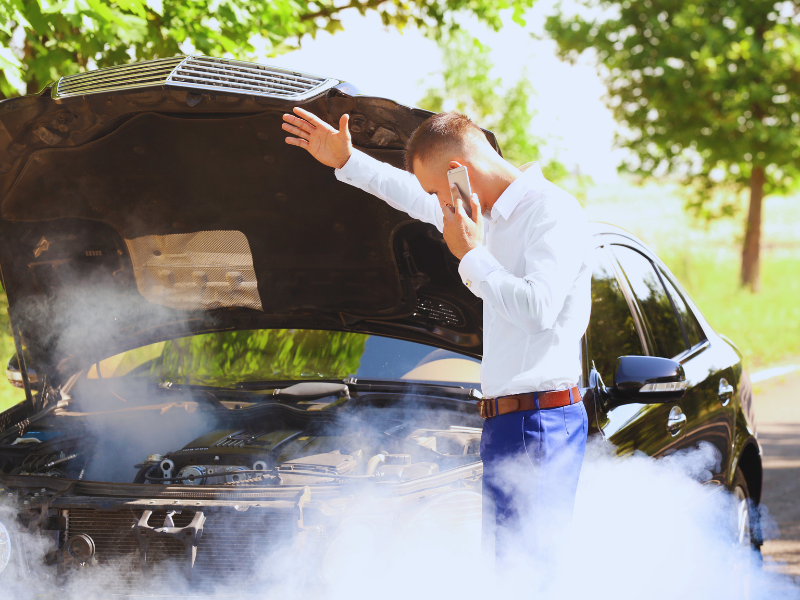Overheating is a common issue that can lead to severe engine damage if not addressed promptly. When a vehicle overheats, it’s essential to identify the cause quickly and take action. At TLC Mobile Auto Care, we understand the frustration and worry that can come with an overheated engine. Here’s a guide to help you understand why vehicles overheat and how to prevent it.
What Happens When a Vehicle Overheats?
Your vehicle’s engine operates at high temperatures, and it relies on a cooling system to prevent overheating. The cooling system, which includes the radiator, water pump, thermostat, and coolant, works to regulate engine temperature. If any component in this system malfunctions, your engine may overheat, leading to potential damage.
When an engine overheats, it can warp metal parts, blow head gaskets, or even cause the engine to seize, resulting in costly repairs or replacements.
Common Causes of Overheating
- Low Coolant Levels: Coolant, also known as antifreeze, absorbs and dissipates heat from the engine. If the coolant level is low, the cooling system can’t perform effectively, leading to overheating. Regularly checking your coolant level is essential to prevent this issue.
- Faulty Thermostat: The thermostat controls the flow of coolant to the engine. If it becomes stuck in the closed position, coolant can’t circulate, causing the engine to overheat. A faulty thermostat is a common culprit in overheating issues.
- Malfunctioning Water Pump: The water pump pushes coolant through the engine and radiator. If it’s not working correctly, the coolant can’t circulate, leading to overheating. Water pump failures are often due to wear and tear or belt issues.
- Blocked Radiator: The radiator helps to cool the coolant before it circulates back to the engine. Dirt, debris, or corrosion can block the radiator, preventing it from cooling the coolant effectively. A blocked radiator reduces the efficiency of the cooling system.
- Leaking Coolant: Coolant leaks can occur in hoses, the radiator, or even the engine block. Leaks reduce the coolant levels, which can lead to overheating. Look out for puddles of coolant under your vehicle as a warning sign.
- Damaged Radiator Fan: The radiator fan helps cool the radiator by pulling air through it. If the fan is damaged or not working, it reduces the airflow, causing the radiator to overheat and, subsequently, the engine.
How to Prevent Overheating
Preventative maintenance is the best way to avoid overheating. Here are a few tips:
- Regular Coolant Checks: Make sure your vehicle’s coolant is at the correct level and has not degraded. Coolant should be replaced according to the manufacturer’s guidelines.
- Inspect Hoses and Belts: Hoses and belts connected to the cooling system should be inspected for wear, cracks, or leaks. Replacing these components as needed can help prevent overheating.
- Clean the Radiator: Regularly check your radiator for any debris or dirt build-up. A clean radiator operates more efficiently, keeping your engine cool.
- Pay Attention to Warning Signs: The temperature gauge on your dashboard can warn you of rising engine temperatures. If you notice the gauge moving into the high range or see a warning light, stop your vehicle safely and address the issue immediately.
What to Do if Your Vehicle Overheats
If you notice that your vehicle is overheating, pull over safely and turn off the engine. Allow the engine to cool down before opening the bonnet or attempting to add coolant. Adding coolant to a hot engine can cause burns and damage. Once the engine is cool, check the coolant level and top it up if needed. If the problem persists, seek professional assistance.
At TLC Mobile Auto Care, we’re here to help keep your vehicle running smoothly. Regular maintenance can prevent many causes of overheating, so consider scheduling a check-up with our expert team for peace of mind on the road.

 OPEN NOW
OPEN NOW

Recent Comments